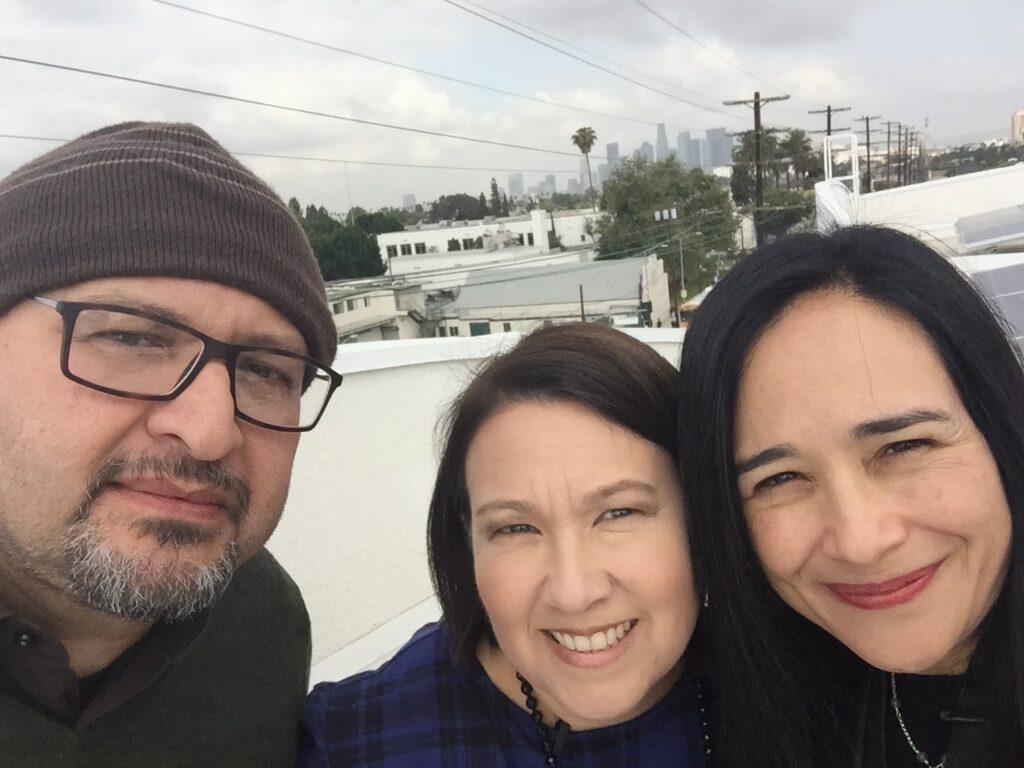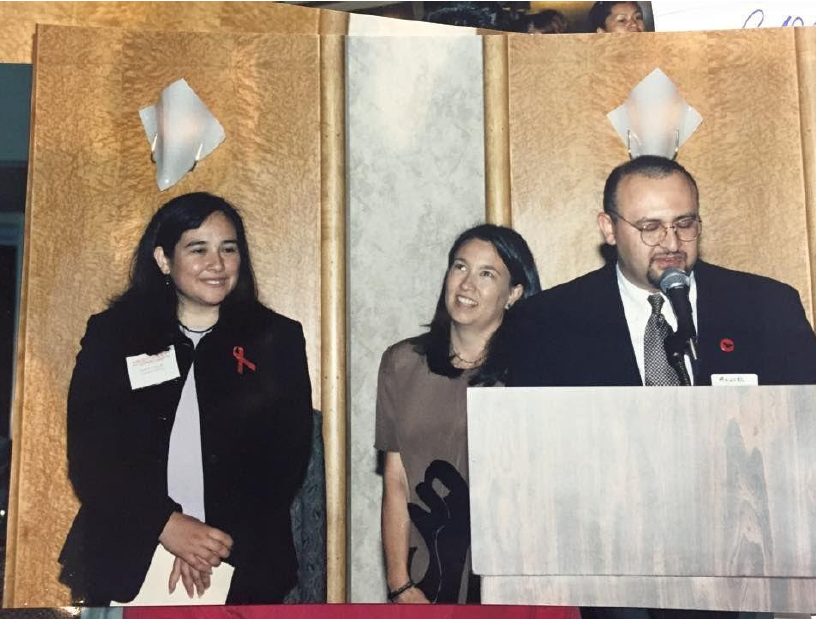By Maria Cabildo and Joaquin Bernal
Has it been 25 years? Wow, it feels like last week that we signed our incorporation documents and prepared our first funding application. A lot has changed in Boyle Heights since 1995. Many of it positive and with ELACC playing an essential role. When I left ELACC in 2015, after serving as its leader for nearly sixteen years, I often referred to the organization as something akin to my first-born child and that it was necessary for it to go on without me before my actual children left for college. To continue that analogy, in 2015, the organization was on the verge of adulthood and ending a life under constant care –or control, depending on your view and opinion– of one of the organization’s founders. Today, I am as proud of ELACC as I am of my own children. These last five years, I have watched it from a distance and at times felt deep pangs of sadness and moments of joy as it went through the kinds of growing pains that are so normal as organizations–like people–grow and individuate.
This reflection is a collaboration between me and my actual first-born child, Joaquin. We sat down together after I had a long day of back to back Zoom meetings and with deadlines looming in the background. It was a rushed conversation and he did an excellent job of capturing my tone and the content.
I can tell you very clearly and unequivocally that ELACC and what it is today far surpasses whatever hopes and dreams I had for this organization when we founded it in 1995. I think that a lot of people, including people who have current critiques of ELACC, don’t know what Boyle Heights was like in the late 1960s to the 1980s when many of the founders of ELACC were growing up on the Eastside of Los Angeles. I believe that, right now, they see a community that is being threatened by gentrification where people feel that they’re going to be displaced.
As of now, there is so much investment and interest in the community. Yet, in the Boyles Height and East Los Angeles that I grew up in, there was severe neglect. There was no interest by the private sector investment and there were many social service agencies that were doing their best to provide services but we were severely under-resourced. For that reason, I think some people today may have a hard time understanding the context in which we founded the organization; an organization, which in its infancy, was doubted by many of our contemporaries.
We had a lot of people tell us that they didn’t think there was room in Los Angeles for a nonprofit organization that would be focused on building affordable housing for this community in particular. There was a feeling that all of the nonprofits and organizations that were going to address Los Angeles affordable housing needs had already been founded, many in the 1980s. Quite honestly, when the other founders and I came, we didn’t have anybody put out a welcome mat for us, nor did we didn’t have people falling over themselves to partner with us. We had to be really tenacious. If I had to think of a word that could describe East LA Community Corporation at its beginning, it would be tenacity. We truly believed in this community enough to put out some new models of how to do community development when other people looked on doubtfully.
For me, to see an organization that has had so much impact in the changing of government systems to make them more equitable fills me with pride. I am reminded of the street vendor campaign when ELACC helped to legalize street vending in the city of Los Angeles; and winning policies to make the development of affordable housing less onerous and difficult to carry out at Metro sites. I also see the accomplishments in terms of hundreds of families living in affordable housing or families moving from converted garages and substandard housing into apartments that are the right size for their families. When I see the number of people who have been able to build wealth through the homebuyer education and financial literacy programs in the Community Wealth Department, I realize that all of those accomplishments are so much more than even the wildest dreams that I had for this organization starting out in 1995.

I first started working on founding East LA coming Corporation when I was a graduate student at UCLA in 1992. I had actually been part of trying to create an organization in East LA a couple of years before in 1990. We tried to found an organization that would organize youth on the Eastside of Los Angeles to be more organized and politics. That project was called the Barrio Empowerment Project (BEP). We did a lot of outreach and we had actually just come off of working on a campaign that focused on East LA and Boyle Heights where we activated a lot of youth to be active in that campaign. Unfortunately, we weren’t really structured well, people were distracted with their jobs and the organization altogether did not end up getting founded. Even so, I was able to learn a lot about that experience and I took the lessons I learned there and applied them when we started working on ELACC.
Of the original founders of the organization, Evangeline Ordaz Molina, Manuel Bernal, and I kept running into each other around parties and social events where we would start talking about what we were each doing individually. Evangeline was an attorney at Legal Aid, I was an urban planning student at UCLA, and Manuel worked at the City of Los Angeles. At these meet-ups, we would always talk about the dire need for housing on the east side of Los Angeles and how nobody was really working on the area. It was a time when there were more resources becoming available to build affordable housing but those resources were not flowing into the Eastside of Los Angeles because there was no organization established there. Again, we were very young. I was just starting out of my career and was in my early twenties and we were all basically waiting for larger existing social service organizations to re-tool themselves and realize that they needed to do affordable housing for families but in the end, none of them did. While we were waiting for the more established and big organizations in the community to start doing something about this problem of affordable housing for families, we finally realized that if we wanted to see anything happen and it was going to fall on us to make it happen.

Even though none of us had any formal experience in running a nonprofit, managing something that big, or raising money before, we believed that something had to be done. Finally, we decided that we would found this new organization. We started by looking at the organizations that had done housing on the Eastside of Los Angeles. While these organizations had been around for a long time, our neighborhoods didn’t look much different despite the fact that they had been getting lots of funding from the federal government for decades. While building affordable housing is critical–with family housing being priority–it has always been my belief that change would only truly occur if you were to start organizing residents and changing their relationship to power and to the government in a way that they are able to actively influence it or take part in the systems that control resources. To this end, that is why it was extremely important to me that community organizing and affordable housing work in tandem and in service of each other to really transform communities for the benefit of community residents, not only people lucky enough to live in a non-market rate unit.
There is so much value in building affordable family housing. It’s still one of the strongest paths towards achieving housing stability in a world dominated by housing instability. There is no refuting that argument. Nonetheless, real success requires going deeper with the community. If there comes a time when ELACC is declaring victory and moving to the next project without pausing and thinking of how the whole community can benefit and how tenant’s lives are forever improved by living in the housing the organization creates, I would ask it to get back to the deeper worker we identified at our founding. Because the model was: ‘how do you actually transform communities so that they support everybody in them?’
Looking back, the real reason I wanted to be a part of founding this organization because of my belief that you can’t just build housing– it has to be more than that. You have to be transforming the way that people who are traditionally locked out of power and decision-making find their voices which includes but is not limited to undocumented immigrants, people that are locked into low-wage work, others who are at risk of displacement. Those voices must be heard and have to have the ability to influence the future of their community. It was very important to me that ELACC marry these two things: community organizing and affordable housing development in the service of the a community who had been chronically overlooked during government decision making in favor of the needs and demands a vocal minority of homeowners who opposed affordable housing and endorsed over-policing and the criminalization of youth.
When I reflect on what has been done in the last 25 years, I’m just incredibly humbled by what some very dedicated people back in 1995 did and not giving up on this organization, and then seeing it through to this day. Even though it is clear that today there are challenges that lie ahead for ELACC, I have no doubt the same tenacity that made the founding of the organization possible will be put to use at this moment and that in the end, the greatest beneficiaries of this work will continue to be the people we always wanted to serve: low-income renters and residents of the Eastside of Los Angeles. In light of the current global recession, the organization has some experience with economic downturns, ELACC has been through two recessions before the current recessions. In fact, we were founded right on the tail end of the 1990s recession that ravaged the community. Of course, we lived through the 2007/2008 recession and here we are in another recession caused by the pandemic. ELACC has been able to weather a lot of storms and I have absolutely no doubt that it will weather this one too.”
Thank you for being an A student and reading all of my ramblings–or maybe you just jumped ahead. Regardless, I want to thank the current ELACC staff and board for committing to the organization and seeing it through what has been its most challenging patch in its twenty-five year history. I want to thank the many people who have supported the organization. Especially the many people I worked with and learned from during my tenure. These alums are out in the world making a difference in the lives of low-income people. ELACC alums are making a difference in social entrepreneurship, within nonprofit, private, and government sectors. The organization has always been an incubator for talent. I hope that continues into the future and that the many ideas, entities, and ventures its alums pursue contribute to creating a new social compact where all families, children, and individuals can not just survive but thrive. I have great hope for ELACC’s future and remain equally hopeful that I live to see it reach middle-age in a more just and equitable world.
Adelante, mi gente!
Maria Cabildo

